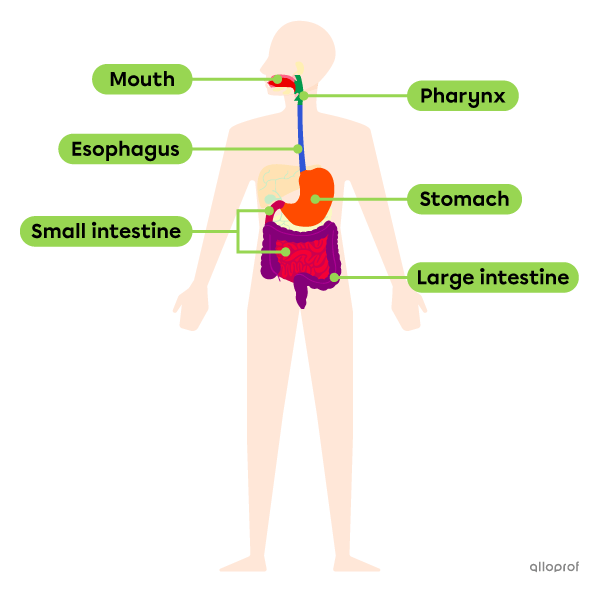The Digestive System and Anatomy
The digestive system is the set of organs involved in the transformation of food into nutrients that can be absorbed by the body. It also enables the elimination of solid waste.
The digestive system consists of the digestive tract and the digestive glands.
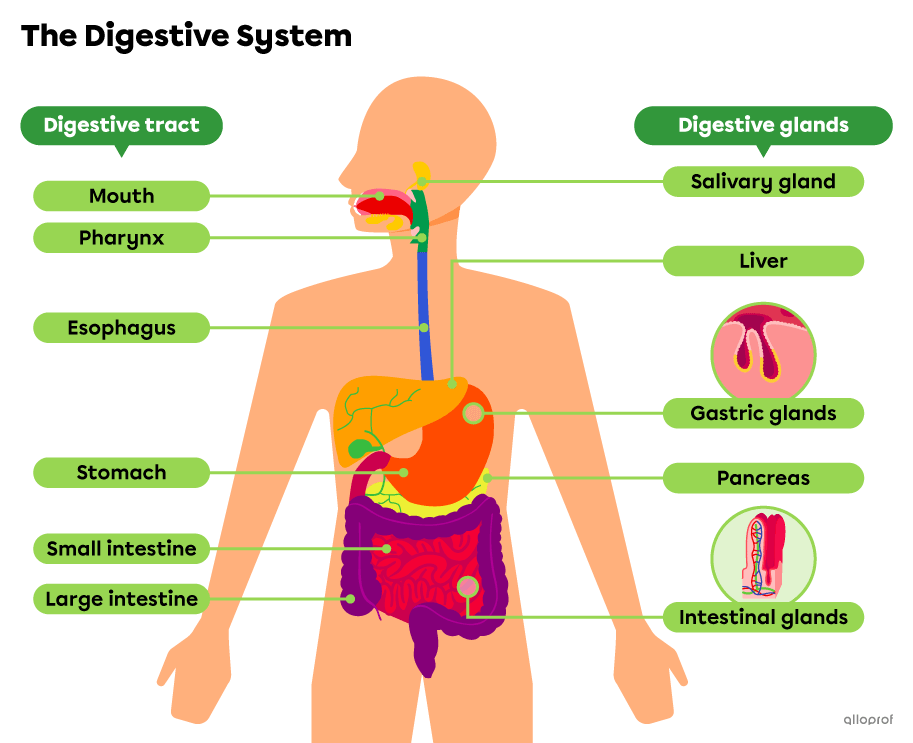
Digestive Tract
Digestive Glands
Digestive Tract
The digestive tract, also called the gastrointestinal tract or GI tract, is a long muscular tube through which the ingested food travels.
Important!
The role of the digestive tract is to break down food, absorb nutrients and eliminate waste.
The following image shows the organs of the digestive tract.
Mouth
| Description | Functions |
|---|---|
|
The mouth, or oral cavity, is a cavity lined with a mucous membrane, defined in front by the lips, on the sides by the cheeks, on top by the palate and in the back by the pharynx. The mouth includes certain accessory organs such as the teeth, tongue and salivary glands. |
|
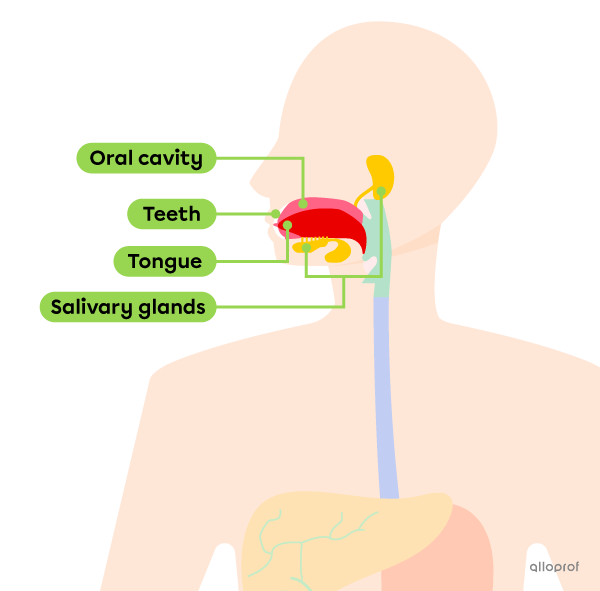
Mouth
Pharynx
| Description | Function |
|---|---|
|
The pharynx is a muscular duct lined with a mucous membrane, connecting the nasal cavity, mouth and esophagus. It is a shared part of the respiratory and digestive systems. |
|
The upper part of the pharynx contains a muscle called the uvula. The lower part of the pharynx contains a cartilaginous flap called the epiglottis. These structures are involved in swallowing.

Pharynx
Note: The nasal cavity is part of the respiratory system.
Esophagus
| Description | Function |
|---|---|
|
The esophagus is a tube about 25 cm long connecting the pharynx and the stomach. The walls of the esophagus contain smooth muscle tissue. |
|
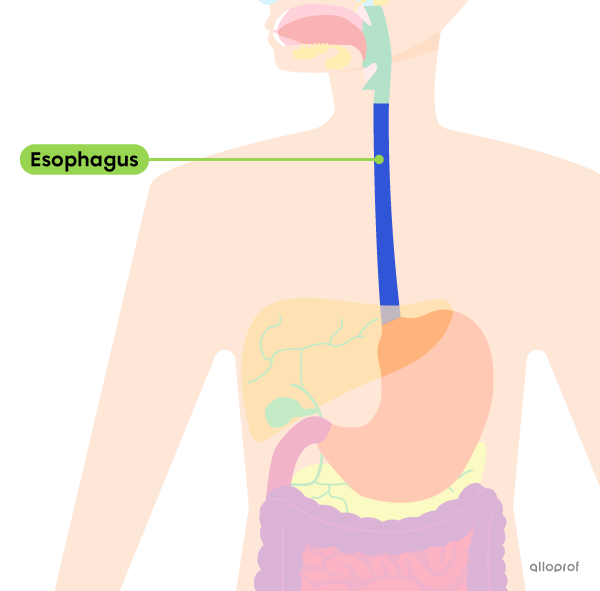
Esophagus
Stomach
| Description | Functions |
|---|---|
|
The stomach is a muscular pouch located between the esophagus and the small intestine. The epithelial tissue that lines the inside of the stomach is covered with microscopic cavities that contain the gastric glands. |
|
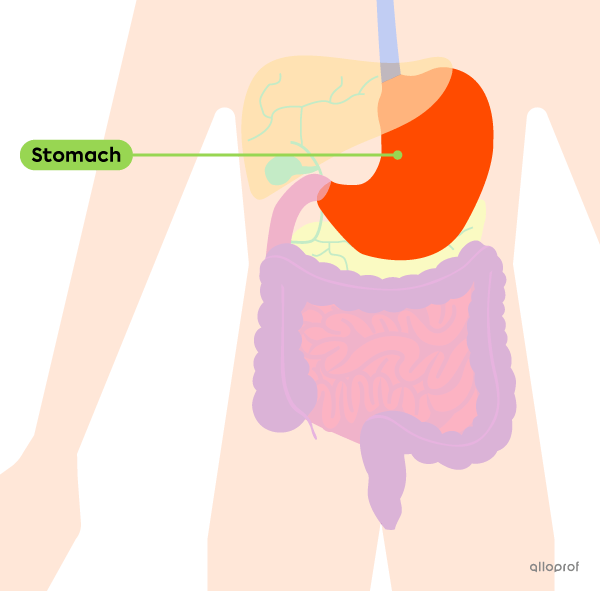
Stomach
The elasticity of the stomach wall allows it to hold up to 4 L of food while its volume is only 50 mL when completely empty.
Small Intestine
|
Description |
Functions |
|---|---|
|
The small intestine is a long muscular tube about 2.5 to 4 cm in diameter. It is located between the stomach and the large intestine. It is the longest organ in the digestive system. |
|
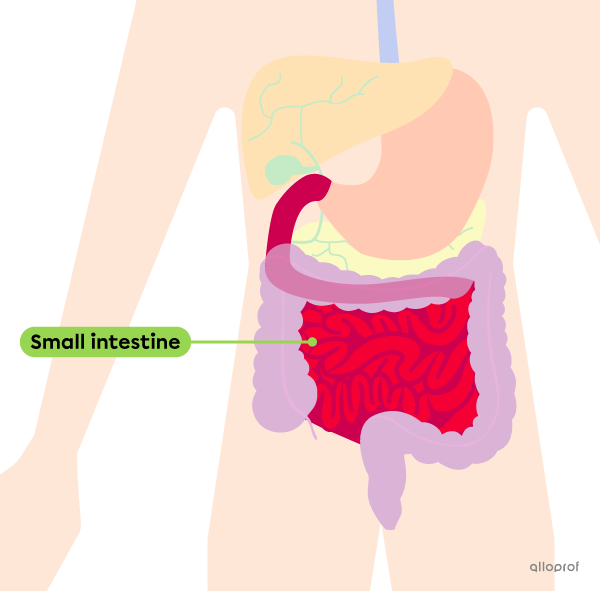
Small intestine
The epithelial tissue that lines the inside of the intestine forms thin, elongated, hair-like projections. These are the intestinal villi.
Each cell covering the surface of the intestinal villi is also covered with microscopic projections called microvilli.
Large Intestine
| Description | Functions |
|---|---|
|
The large intestine is a muscular tube about 7 cm in diameter. The large intestine is the last organ of the digestive tract. |
|
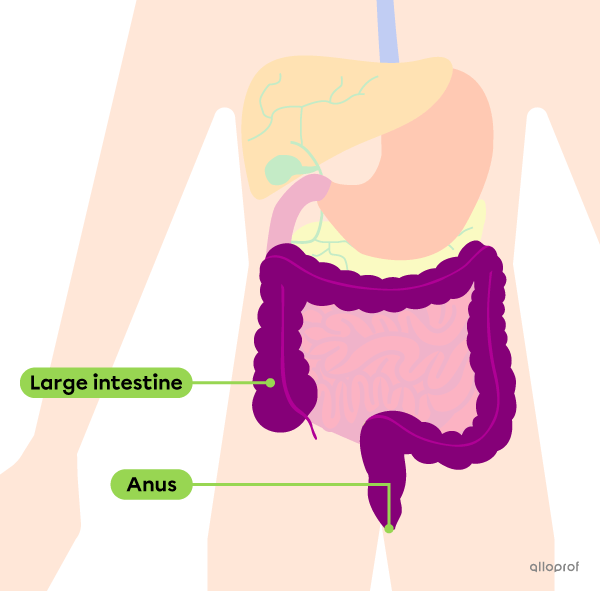
Large intestine
Be careful!
The terms colon and large intestine are not synonymous. In fact, the colon is only one section of the large intestine.
Digestive Glands
Digestive glands are glands that secrete substances that help break down food.
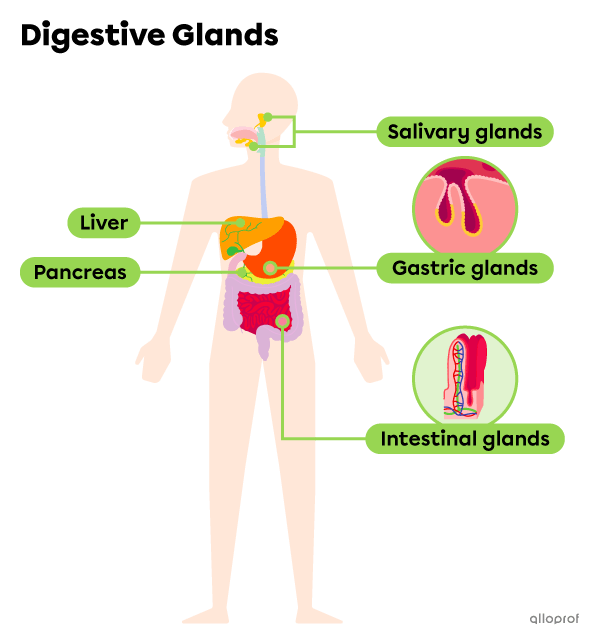
Find out more!
Integrated and Accessory Digestive Glands
There are two types of digestive glands: integrated and accessory digestive glands.
|
Type of digestive glands |
Integrated digestive glands |
Accessory digestive glands |
|---|---|---|
|
Description |
These are digestive glands integrated directly into the wall of the digestive tract. They are in direct contact with the contents of the digestive tract. |
These are digestive glands located outside of the digestive tract. Their secretions are carried into the digestive tract through various ducts. |
|
Examples |
Salivary Glands
| Description | Function |
|---|---|
|
Salivary glands are accessory digestive glands located at the periphery of the mouth. They are mainly found under the tongue and at the back of the mouth. Other small salivary glands (not visible in the image) are integrated into the mucous membrane of the mouth. |
|
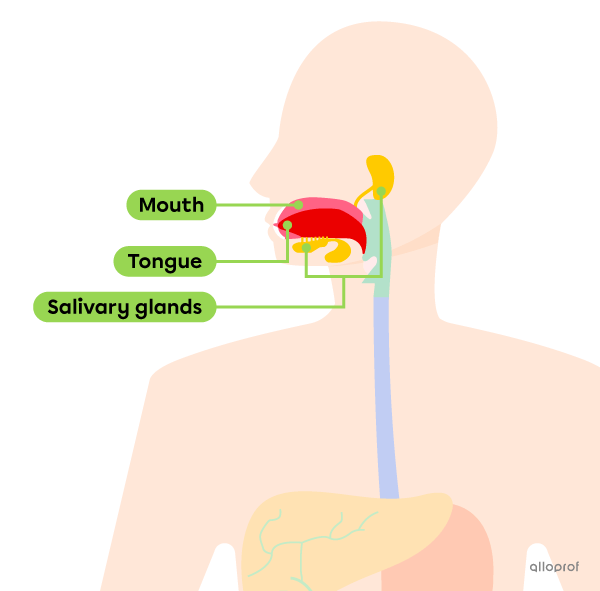
Salivary glands
Gastric Glands
| Description | Function |
|---|---|
|
Gastric glands are digestive glands that are integrated into the inner wall of the stomach. They are located at the bottom of microscopic cavities, called gastric pits. |
|
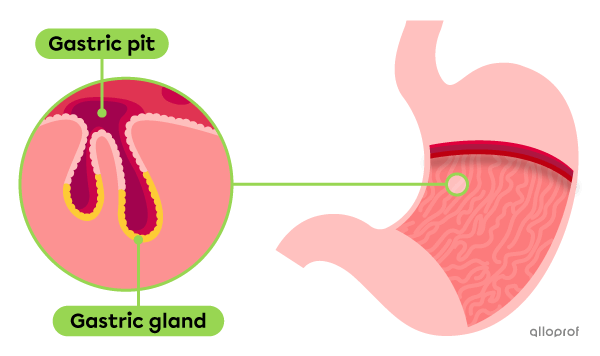
Gastric glands
Liver
| Description | Function |
|---|---|
|
The liver is the largest gland in the human body. It is a digestive gland located to the right of the stomach. The liver is an accessory gland to the digestive tract. The bile secreted by the liver is first stored in the gallbladder before being transported to the upper part of the small intestine. |
|
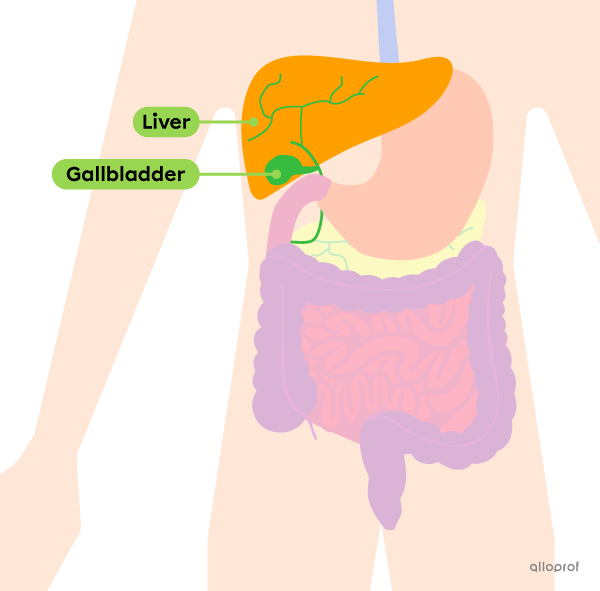
Liver
Pancreas
| Description | Function |
|---|---|
|
The pancreas is an elongated digestive gland, most of which is located behind the lower part of the stomach. It is an accessory gland to the digestive tract. The pancreatic juice produced by the pancreas is carried through a duct and discharged into the upper part of the small intestine. |
|
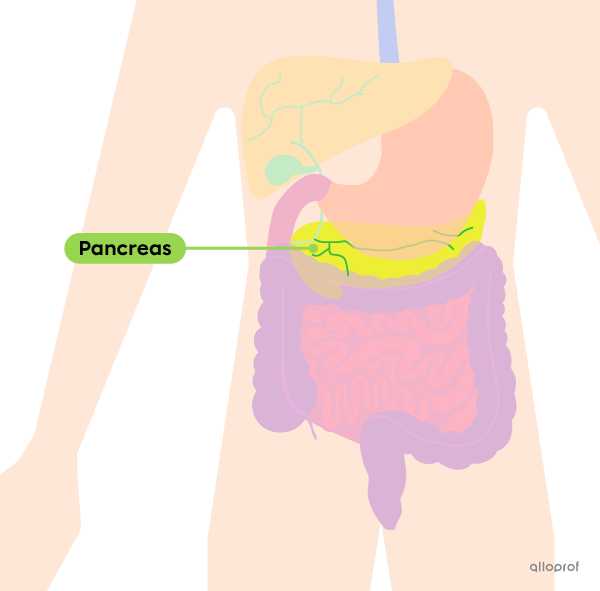
Pancreas
Intestinal Glands
| Description | Function |
|---|---|
|
The intestinal glands are digestive glands integrated into the inner wall of the small intestine. They are located in cavities between the villi of the small intestine. They are glands integrated directly into the digestive tract. |
|

Intestinal glands

















































